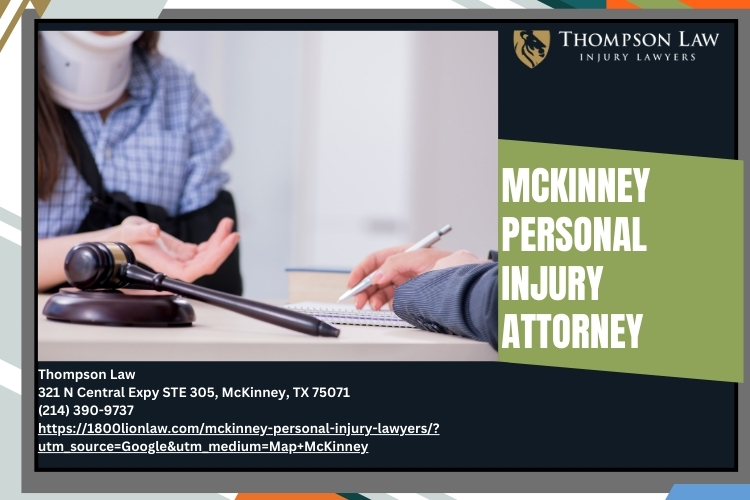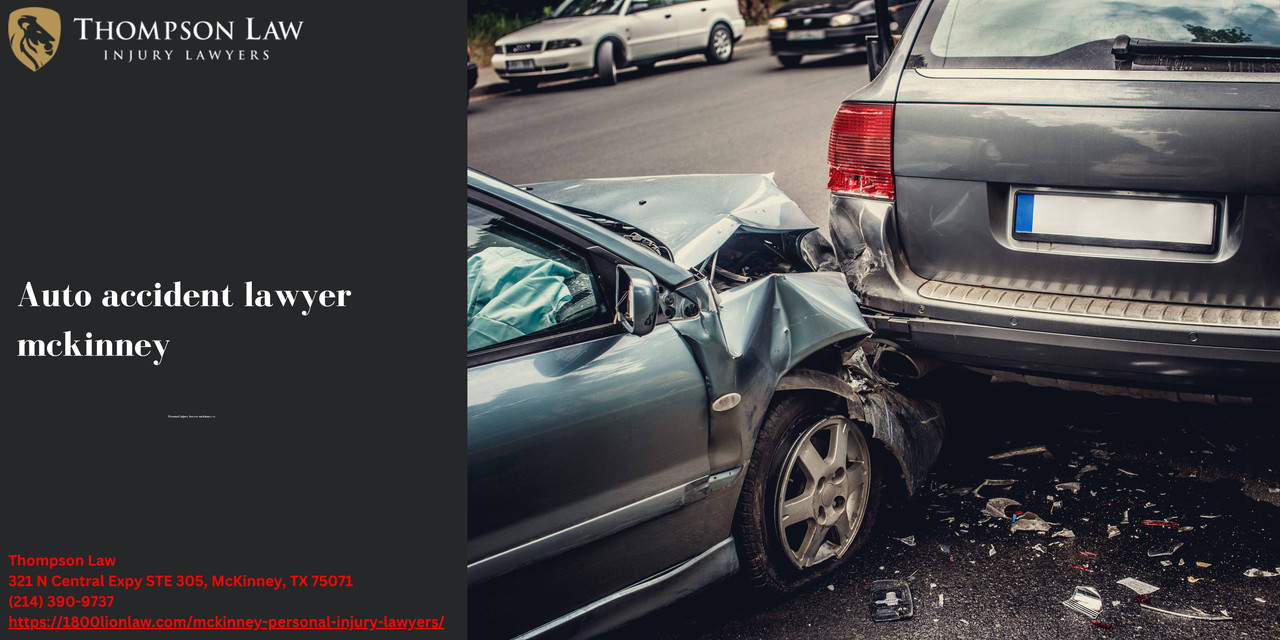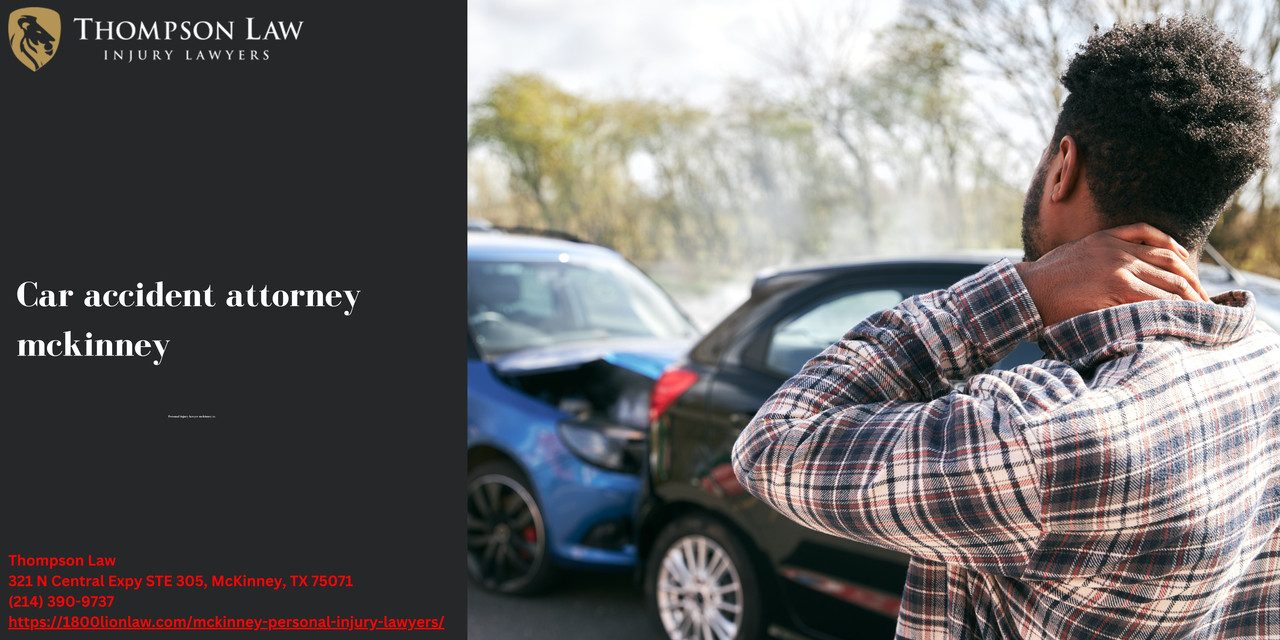Grief after a fatal truck crash hits in waves. Families in McKinney often call within days of the collision, still planning services, fielding calls from insurers, and staring at medical bills they never expected to see. The law gives you the right to pursue answers and accountability, but it does not make the path intuitive. The stakes are high, the deadlines are strict, and truck cases are not just “big car accidents.” They are a different animal, governed by layers of state and federal rules, the realities of commercial insurance, and evidence that can disappear unless someone locks it down immediately.
What follows is a practical roadmap drawn from how these cases actually unfold in North Texas. If you’re a spouse, parent, or child facing a wrongful death after a trucking collision, knowing what matters and when can help you make clear decisions. A seasoned McKinney personal injury lawyer does more than file papers; they help you preserve crucial evidence, navigate corporate defendants, and put full value on a life that can never be reduced to a spreadsheet.
How fatal truck cases differ from other crashes
The biggest misconception is that a wrongful death case against a trucking company is just a larger version of a car crash claim. The physics alone set it apart. A fully loaded tractor-trailer can weigh up to 80,000 pounds. The force in a side-impact or underride collision is often unsurvivable, even in newer vehicles with advanced safety features. But the differences go beyond weight.
Commercial carriers operate under federal regulations that govern everything from driver hours to maintenance intervals. Those rules create both duties and powerful evidence. Driver logs, electronic control module data, dashcam footage, and maintenance records tell a story you will not find in a typical auto claim. The insurance structure is different as well. Many carriers maintain layered policies or self-insured retentions designed to minimize payout. Adjusters in these claims are seasoned, and they hire defense counsel quickly.
A McKinney injury lawyer with a trucking track record knows how to turn the regulatory framework into an ally. The aim is to convert the paper trail into proof of negligence or systemic failure and to identify every party that played a role.
Who can bring a wrongful death claim in Texas
Texas law allows certain family members to bring a wrongful death action: the surviving spouse, children, and parents of the deceased. These claims can be brought individually or as a group. If none of them file within three months of the death, the personal representative of the estate may bring the claim unless a statutory beneficiary objects. Parallel to that, the estate can bring a survival claim for the decedent’s own damages between injury and death, such as pain and suffering, medical expenses, and funeral costs. In practice, both claims often proceed together.
When I meet with a family, we talk through who should act as lead plaintiff, how to manage internal dynamics, and how to keep everyone informed. It is not about excluding anyone; it is about aligning the case with statute and common sense so we do not invite procedural fights the defense will use to delay or divide.
First priorities in the days and weeks after the crash
The first calls often feel counterintuitive. You have funeral arrangements and family to support. But trucking companies move fast. They may send investigators to the scene within hours. Evidence that seems routine on day two can be gone on day seven. In Collin County and beyond, here is what carries weight early:
- Put the carrier and its insurer on written notice to preserve evidence. That means electronic logging data, dashcam video, ECM/EDR downloads, driver qualification files, dispatch communications, and maintenance and inspection records. A spoliation letter should be precise and sent immediately. Get your own scene work done. Photographs, measurements, skid marks, yaw marks, gouge points, debris fields, and traffic signal timing matter. In busy corridors like US 75, US 380, and SH 121, construction shifts and traffic patterns change quickly. A reconstruction expert should see the scene while the physical evidence and sightlines reflect the crash conditions.
Those two steps set the tone. They tell the defense you understand the rules and will not let critical data vanish. It also reduces the chance that your case becomes one person’s word against another’s.
The evidence that moves the needle
Every fatal truck case turns on details. Here are the sources that consistently make a difference in McKinney-area litigation, and what they tend to show when analyzed correctly:

Driver hours and fatigue. Electronic logging devices track hours of service. We compare those logs to fuel receipts, toll data, GPS pings, and bills of lading. When there’s a mismatch, fatigue and falsification come into play. In one North Texas case, an eight-minute gap in a fuel receipt timeline unraveled a driver’s claim that he had taken a required break.
Maintenance records. Carriers must perform systematic inspections. Brake adjustment, tire condition, lighting, and coupling equipment are frequent culprits. I have seen pre-trip inspection checklists that looked perfect in every box while a post-crash inspection measured brakes out of adjustment by several millimeters, enough to add dozens of feet to stopping distance.
Hiring and supervision. Driver qualification files tell you if the company conducted road tests, verified previous employment, and reviewed motor vehicle records. A string of prior roadside violations or preventable crashes can support negligent hiring or retention. If a McKinney auto accident lawyer can show the employer knew or should have known of a driver’s history, liability broadens beyond simple negligence.
Telematics and dashcams. Many fleets run forward-facing or dual-facing cameras that capture the moments before impact. The raw video, plus speed, throttle, and brake application data, often provides the clearest narrative of causation. Companies sometimes resist producing native files. Court orders and careful technical demands help obtain them without improper compression or truncation.
Third-party players. Shippers, brokers, and maintenance vendors may share blame. A broker who pressures a run schedule that violates hours-of-service rules, or a shipper that loads a trailer with a high center of gravity, can end up on the fault chart. Looking beyond the cab and trailer uncovers additional coverage and corrective leverage.
Common liability theories and how they’re proven
Negligence. The core claim is that the driver or company failed to exercise ordinary care. Speeding, following too closely, improper lane changes, and distracted driving are frequent themes. Cell phone records, including app usage logs, can prove distraction. ECM data and dashcam video tie speed and braking to the roadway geometry.
Negligence per se. Violation of a statute or regulation designed to protect motorists creates a presumption of negligence. Hours-of-service, weight limits, and equipment regulations fit this category. When the record shows a rule breach, the defense shifts to arguing causation and damages rather than the breach itself.
Negligent entrustment, hiring, and retention. Hiring a driver with a poor safety history, keeping a driver after repeated violations, or entrusting a tractor to someone unfit amplifies exposure. The driver’s file, prior employer DOT responses, and internal emails make or break these claims.
Gross negligence. In rare but real cases, the conduct crosses into extreme risk territory, opening the door to exemplary damages. Think of a carrier that knowingly disables speed governors or directs drivers to run beyond safe hours. Juries in Collin County scrutinize gross negligence carefully, but the right evidence can meet the standard.
Product liability. Some cases involve a tire failure, brake defect, or underride guard that fails as designed. A product claim runs on a parallel track with its own experts and timelines. Preserving the components in their post-crash condition is critical. Never let a vehicle be scrapped without a court order and a joint inspection.
Damages in Texas wrongful death and survival claims
No amount of money replaces a person. The law tries to measure loss through categories of damages that juries understand and courts can supervise. Wrongful death damages compensate the family members for their losses, while survival damages compensate the estate for what the deceased suffered between injury and death.
Wrongful death damages can include loss of companionship and society, mental anguish, and the financial contributions the decedent would have made, including income and household services. Calculating earnings is not just a spreadsheet exercise. A McKinney car accident lawyer should work with vocational and economic experts who account for career trajectory, benefits, and taxes, not just base pay.
The survival claim can include conscious pain and suffering, medical expenses, and funeral and burial costs. Conscious pain requires evidence. EMS reports, emergency room notes, and witness accounts help establish awareness after impact, even for a short interval. Those details are hard to revisit, but they carry real weight with juries.
Texas also allows exemplary damages in cases of gross negligence. These are capped under state law in most situations, but they can still add significant leverage. A careful damages presentation blends numbers with narrative. It ties dollars to real habits and roles: the morning school routine a parent handled, the coach who ran Saturday practices, the family accountant who kept the books.
Dealing with insurance and corporate defendants
Expect a quick phone call from an insurer offering condolences and asking for information. Be polite and brief, then direct them to your counsel. Insurers are not obligated to help you prove your case. Early recorded statements can be used to narrow your claims or create inconsistencies. Classifying this as a “tragic accident” is not a concession you need to make, especially before the data is in hand.
Corporate defendants often operate through multiple entities with names that sound alike. A carrier might be under a holding company with a separate DOT number for different regions. Identifying the correct entity early avoids service fights. If a broker or shipper may be liable, their contracts, rate confirmations, and communications matter. Those often require subpoenas and court orders. A McKinney personal injury lawyer accustomed to this dance files suit early, issues discovery with specificity, and keeps pressure on the defense to produce documents in native formats with metadata preserved.
Timelines and deadlines in Texas
Texas has a two-year statute of limitations for wrongful death and survival claims, measured from the date of death. There are exceptions, but relying on tolling or discovery doctrines is a gamble. Filing suit well before the deadline gives you time to resolve evidence disputes, conduct inspections, and depose witnesses while memories are fresher.
Preservation deadlines run much sooner. Federal regulations allow carriers to destroy certain records after short retention periods, sometimes as little as six months. That is why a detailed preservation letter within days or weeks matters far more than waiting to “see what the insurer says.” Once a spoliation fight starts, you are playing from behind.
How fault is allocated and how it affects recovery
Texas uses proportionate responsibility. A jury can assign percentages of fault among all responsible parties, including non-parties the defense designates. If the decedent shares some blame, that percentage reduces the family’s recovery. If the decedent is found more than 50 percent responsible, recovery is barred. Experienced counsel work both sides of this equation. They develop your evidence and anticipate comparative fault arguments: visibility at night, speed differentials, failure to yield, or improper stopping on the shoulder.
This is where reconstructive engineering and human factors testimony matter. If a truck’s sightlines or stopping distance made the collision unavoidable for the decedent, the jury needs to see that on scaled diagrams and animations rooted in the actual data, not speculation. Similarly, if a truck driver failed to account for traffic conditions around the US 75 construction zones, that context shifts responsibility back where it belongs.
Settlement dynamics and when to try a case
Most wrongful death cases resolve before a verdict, but trucking defendants are not quick to pay top value. They evaluate your willingness to try the case. They watch whether your experts hold up in deposition. They notice if you demanded full telematics and video rather than accepting summaries. In Collin County courts, trial dates can push carriers to move. Mediation is common, and a good mediator will pressure both sides with risk.
I advise families to stay open to resolution while preparing as if trial is certain. That means thorough damages work, even if you believe liability is clear. It means having your economic expert ready to explain assumptions, not just deliver a number. And it means confronting uncomfortable defense themes head-on, rather than hoping they won’t surface at mediation. If a McKinney injury lawyer shows command of both fault and damages, settlement offers reflect that preparation.
Working with the right McKinney counsel
Trucking cases reward experience and penalize shortcuts. When you meet with a lawyer, ask how quickly they can issue preservation notices, whether they have a roster of reconstructionists and trucking safety experts, and how they approach dashcam and ECM downloads. Ask about prior trucking cases in North Texas, not just general auto claims. A McKinney auto accident lawyer who understands local courts, typical defense firms, and the highways in question starts with home-field awareness.
You should also expect clear communication. Family members need updates without legal jargon, honesty about timelines, and a plan for out-of-pocket expenses. If an estate needs to be opened to pursue a survival claim, your lawyer should handle that or coordinate closely with probate counsel. If grief counseling or victim services can help, your lawyer should have those resources at hand.
Costs, fees, and practical expectations
Most wrongful death trucking cases are handled on a contingency fee. The firm advances case costs, which can be significant when experts are involved. A full reconstruction, ECM analysis, and multiple depositions add up. Good firms explain the fee, costs, and how reimbursement works if there is a recovery. They also discuss health care liens, hospital liens, and subrogation rights that may reduce your net. Addressing liens early avoids surprises later.

Expect a timeline measured in months or a couple of years, not weeks. Early settlements happen but are rare in fatal cases with disputed liability. Law and motion work, discovery battles over electronic data, and expert schedules take time. What you can control is prompt action at the start, consistent communication, and a team that pursues the case with urgency.

Local realities: McKinney and North Texas corridors
Collisions cluster in predictable places. US 75 carries heavy commuter traffic alongside commercial loads. US 380 mixes local runs and intercity freight with frequent turnarounds and signalized intersections. SH 121 funnels regional commerce with high speeds and short decision windows at on-ramps and interchanges. Construction zones shift lanes and create pinch points where improper merges and last-second braking become routine.
When we investigate a fatal truck crash in McKinney, we account for these factors. Was there a temporary lane shift? Did signage comply with the Texas Manual on Uniform Traffic Control Devices? Were there active work crews that day? These details shape both liability and jury perception. A local jury understands what it feels like to navigate those stretches at dusk when glare and congestion converge. Your proof should honor that lived reality.
An example of how cases turn on small truths
Several years ago, a family lost a father in a rear-end collision with a tractor-trailer during predawn hours. The police report faulted the decedent for stopping in a live lane. On first glance, the case looked grim. Our team pulled the truck’s ECM and obtained the dashcam video through a court order. The video showed the truck drifting right within its lane every few seconds, consistent with micro-sleeps. The ECM revealed no hard braking until less than a second before impact, despite taillights visible at a distance. Traffic cameras confirmed an earlier fender-bender had forced vehicles to slow, and a Good Samaritan had pulled onto the shoulder to help, flashing hazards. The reconstruction reset the narrative: the truck driver failed to maintain vigilance and speed for conditions. The case resolved for Thompson Law McKinney injury lawyer full policy layers after depositions.
The lesson is simple. Resist the first story. Truck cases reward curiosity and rigorous analysis.
What to do now if you’re on this path
If you are reading this because a truck crash took a loved one in or near McKinney, take two concrete steps now:
- Retain counsel who can act immediately on preservation, scene investigation, and insurer communication. Ask them to send tailored spoliation letters within 24 to 48 hours and to engage a reconstructionist promptly. Gather what you already have: photos, contact info for witnesses, crash case number, medical records, employment documents, and any correspondence from insurers. A prepared first meeting accelerates the investigation.
Everything else flows from there. The right McKinney personal injury lawyer will lead with investigation, not assumptions; will speak plainly about strengths and weaknesses; and will build a damages story that reflects the person you lost, not a stereotype.
Accountability after a fatal truck crash is not measured only in dollars. It is also the company that changes a dispatch policy, the driver who no longer shortcuts sleep, the broker who pads schedules to respect hours-of-service, and the quiet message that life in this community is worth protecting. A careful, forceful case delivers that message while securing the resources your family needs to rebuild.
Contact Us
Thompson Law
Address: 321 N Central Expy STE 305, McKinney, TX 75071
Phone: (214) 390-9737